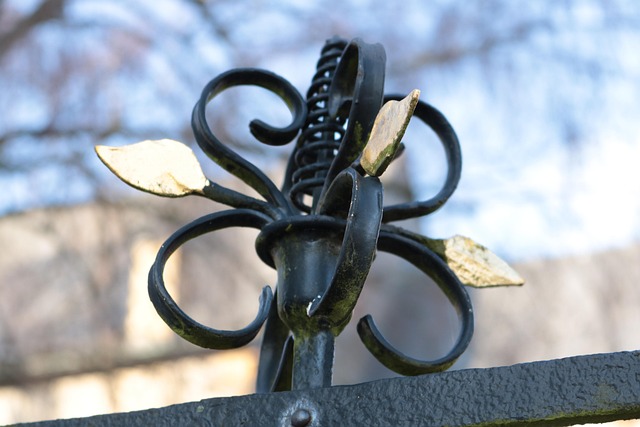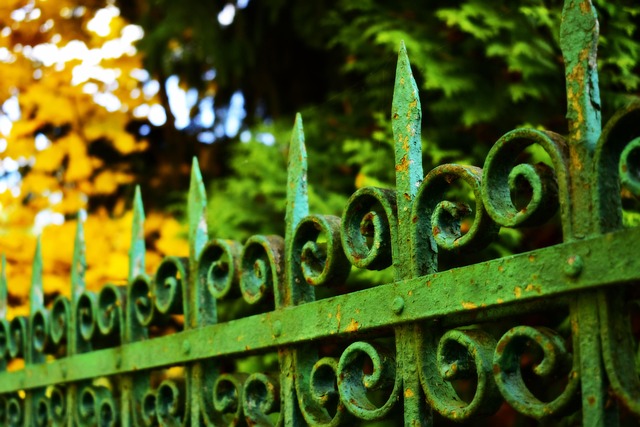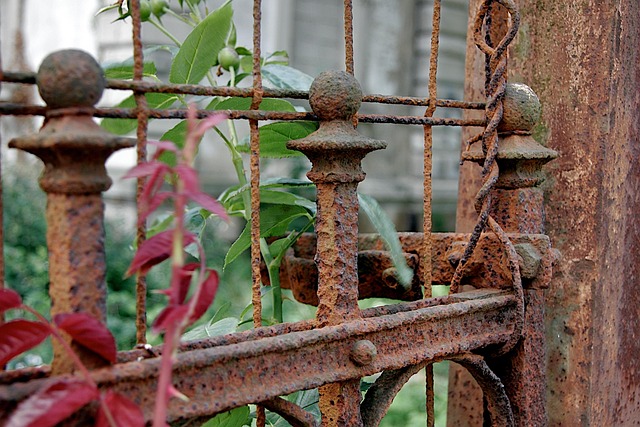Ornamental iron fencing, once symbols of status and protection, have evolved into artistic expressio…….
Category: Ornamental Iron Fence Collingwood
Ornamental Iron Fence Collingwood: A Timeless Elegance
Introduction
In the heart of Collingwood, Ontario, a tradition of craftsmanship and elegance has been forged—quite literally. The ornamental iron fence, an iconic symbol of beauty and durability, has long adorned the homes and public spaces of this picturesque town. This article delves into the intricate world of “Ornamental Iron Fence Collingwood,” exploring its historical significance, global impact, economic contributions, technological advancements, policy landscape, challenges, case studies, and future prospects. Join us as we unravel the story behind this timeless element of architectural adornment.
Understanding Ornamental Iron Fence Collingwood
Ornamental iron fences are characterized by their intricate designs, robust construction, and longevity. They serve not only as a barrier but also as a statement piece that enhances the aesthetic appeal of any property. The Collingwood variant is particularly renowned for its craftsmanship, often incorporating local artistic influences. These fences are typically composed of iron or steel, with a protective coating to resist weathering and corrosion. They come in various styles, from the classic scrollwork to more modern geometric patterns, catering to diverse tastes and architectural designs.
Historically, ironwork has been a hallmark of Collingwood, reflecting the town’s industrial past and its legacy as a significant producer of iron and steel products. The ornamental iron fence became a symbol of status and sophistication, marking the boundary between public and private spaces with an artful touch.
Global Impact and Trends
The influence of Collingwood’s ornamental iron fences extends far beyond its borders, impacting global trends in architecture and design. The resurgence of Victorian and heritage-style homes has reignited interest in traditional wrought iron designs, while contemporary architects are integrating these elements into modern buildings to add a layer of historical charm.
The demand for such fences is not limited by geography; they are a global phenomenon, with artisans and companies around the world adapting styles to suit local tastes and climates. In regions like Europe and parts of North America, the ornamental iron fence remains a staple in both urban and rural settings.
Economic Considerations
The economic landscape of Collingwood’s ornamental iron fences is multifaceted. On one hand, they represent a niche market with high-end appeal, catering to discerning clients who value quality and craftsmanship. On the other, the mass production of more generic designs has made these fences accessible to a broader audience, contributing to the local economy through job creation and material sourcing.
Market dynamics reveal that while economic downturns may affect luxury markets, the durability and low maintenance requirements of iron fences make them a cost-effective long-term investment, sustaining demand even during financial challenges.
Technological Advancements
Technology has played a crucial role in advancing the design and manufacturing of ornamental iron fences. Automated machinery, computer-aided design (CAD), and 3D modeling have revolutionized the way these fences are crafted, allowing for greater precision and efficiency. Corrosion-resistant coatings and materials have also improved, ensuring longevity and reducing maintenance costs.
Future advancements may include smart materials that change color or texture, or even self-healing surfaces that repair scratches and dents autonomously. The integration of lighting systems into the designs is another area of innovation, providing both security and aesthetic enhancement.
Policy and Regulation
The governance of ornamental iron fences in Collingwood and beyond is shaped by a mix of building codes, heritage preservation laws, and safety regulations. These policies ensure that fences are installed to minimize risks while preserving the character and integrity of historical neighborhoods.
Local authorities often work closely with artisans to balance aesthetic aspirations with structural soundness. International standards for materials and coatings further dictate the quality and longevity of these fences, influencing their production and installation globally.
Challenges and Criticisms
Despite its popularity, the ornamental iron fence industry faces challenges, including environmental concerns related to the production and disposal of materials, the need for skilled labor in crafting high-quality pieces, and the potential for aesthetic overkill when not integrated thoughtfully into a design scheme.
To address these issues, stakeholders are investing in sustainable practices, such as recycling and using eco-friendly coatings. Education and training programs aim to preserve the art of ironwork, ensuring that the tradition continues for future generations.
Case Studies
Several case studies exemplify the successful application of ornamental iron fences around the world. In Collingwood, a historic estate revitalized its grounds with an iron fence that paid homage to the original design, enhancing both security and curb appeal. In urban centers like New York City and Paris, landmark properties have restored their iron fences, preserving a piece of history while ensuring safety and accessibility for visitors.
Future Prospects
Looking ahead, the future of Collingwood’s ornamental iron fences appears bright. With a growing appreciation for heritage craftsmanship and sustainable building materials, these fences are poised to remain a timeless addition to properties worldwide. Innovations in design and technology will continue to push the boundaries of what is possible, ensuring that this art form evolves while retaining its essence.
In conclusion, Collingwood’s ornamental iron fences represent more than just a barrier; they are a testament to craftsmanship, a reflection of cultural heritage, and a symbol of enduring design. As we have explored the various facets of this industry, it is clear that its legacy will continue to be celebrated and innovated upon for generations to come.
Choosing High-Quality Ornamental Iron Fence Materials in Barrie
When choosing an ornamental iron fence in Barrie, consider the city's diverse design options, l…….
Ornamental Iron Fences: Elevating Collingwood Homes with Style and Value
An ornamental iron fence in Collingwood significantly enhances property value through its combinatio…….
Expert Tips: Maintain & Prolong Life of Ornamental Iron Fences Barrie
Ornamental iron fences in Barrie offer both functionality and artistic beauty, with durable designs…….
Timeless Beauty: Fence Right Inc’s Long-Lasting Ornamental Iron Panels
Fence Right Inc offers durable and aesthetically pleasing ornamental iron fence panels, ranging from…….
Collingwood’s Ultimate Guide: Ornamental Iron Fences with Fence Right Inc
Fence Right Inc offers Collingwood residents beautiful, durable ornamental iron fences tailored to i…….
Explore Collingwood’s Ornamental Iron Fences: Styles for Every Budget
Ornamental iron fences in Collingwood are gaining popularity due to their dual role in enhancing cur…….
Collingwood’s Ultimate Guide: Ornamental Iron Fences with Fence Right Inc
Fence Right Inc offers exquisite ornamental iron fences in Collingwood, enhancing property security…….
Top ornamental iron fence companies in Collingwood: Your guide to stunning borders
Ornamental iron fences in Collingwood are iconic, blending aesthetic allure with robust security. To…….
Boost Collingwood Homes’ Value with Ornamental Iron Fencing from Fence Right Inc
Collingwood homeowners can significantly enhance their property's curb appeal, security, and va…….



